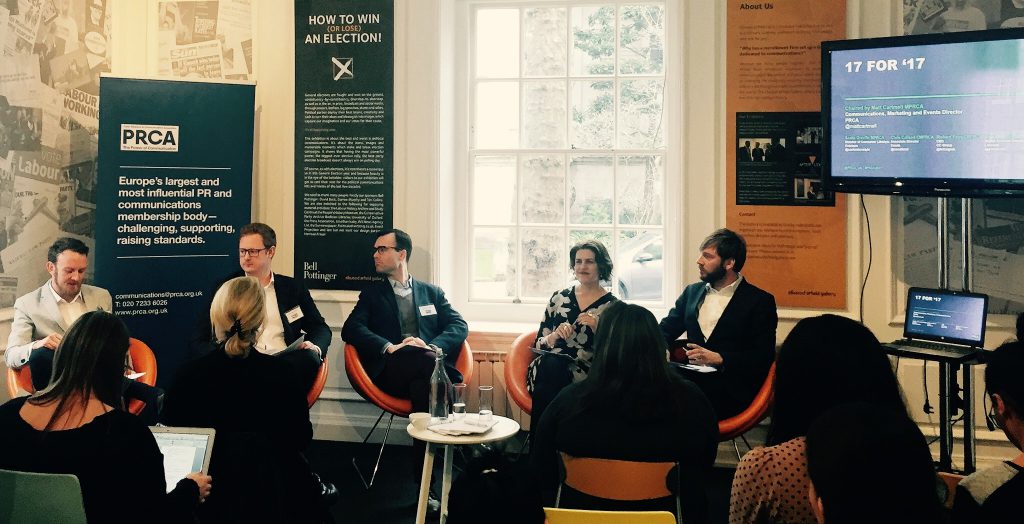
From fake news and social media echo chambers, to the potential impact of AR and machine learning on brand marketing, it’s already shaping up to be a notable year for communications.
Last month, at the ellwood atfield gallery, PRCA unveiled its annual list of recommendations for great communications, with insights from senior members across the industry.
The “17 for ’17” covers a wide range of topics that will affect practitioners in the year ahead, including high levels of cynicism about corporations, the move towards live content, and the need to maintain the industry’s growth through hiring talent, especially diverse talent.
business and consumer trends
Speakers at the launch event included Trevor Hardy, CEO of The Future Laboratory, who looked at business and consumer trends for 2017. These included the crisis of “systemic distrust” affecting individual brands and entire sectors, which means businesses are having to work much harder to earn our trust. They are having to learn to communicate in different ways: “radical transparency” and “brutal honesty” are now the order of the day.
Hardy also argued that consumer trust has shifted from being based on rational thinking, to being based on an “emotional economy”: how we feel – about everything from brands to public figures – now has greater currency than facts. Hardy suggested that the US presidential election result was evidence of this: “For the first time, facts and the logical argument were literally trumped by emotion, everywhere”.
fake news
The phenomenon of fake news was, inevitably, a preoccupying theme for all the speakers and panellists at the event, including the rise of the clickbait model of journalism. Edelman’s UK MD of Corporate and Financial Nick Barron, however, asserted that:
“The post-truth narrative is comforting for London liberals, as it’s an easy label to avoid having to deal with the real issues. The public are not stupid and we are all resistant to facts, because we are all too certain now that our side is right. Tribalism has taken over”.
In these interesting times, it’s no surprise that three of the PRCA’s recommendations concern the challenges and opportunities for brands of our need for escapism and digital detox, and our demand for brands to have an authentic purpose at their heart.
As Ketchum’s Director of Consumer Lifestyle Saska Graville, who was on the discussion panel at the “17 for 2017” launch, said:
“I want brands to remind me that people are kind, that they can be a force for good, and there is still joy in the world”.
augmented reality
Another speaker (who is unlikely to be taking a digital detox any time soon) was digital specialist Tom Sanville from MSL, who showed some stunning examples of how brands and organisations are using VR and AR, and hammered home the scope of the potential for creating immersive experiences: by 2020, the VR industry will be worth around $30 billion, and by 2025, 500m VR headsets will have been sold. That’s a lot of opportunities to influence.
beyond the 17 recommendations
There are, of course, other aspects of society that will define communications in 2017. The panel cited various examples, from the reputational impact of the increasing number of data breaches, to platforms such as Snapchat that brands are just starting to use properly, to embracing “age-agnostic” creative featuring older women (this will resonate with anyone who saw the recent Twitter storm over a picture of a very elderly woman being used to illustrate a news story about over-55s).
As various commentators assert that “alternative facts” are likely to spread from the political to the corporate arena, it will be fascinating to see how the new communications and media environment evolves over the course of this year.



